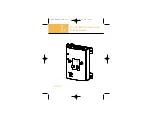
11
Junior high school
Different Products
• • • • • • • • • • • Using the activity in the classroom • • • • • • • • • • •
This activity could be introduced to the whole class by asking students to individually make up any
multiplication using only the digits
1
, 2, 3 and 4. The different multiplication problems and their
answers can then be compared and students can be set the task of finding the largest product.
Students should be encouraged to estimate the answers to the various multiplication problems.
• • • • • • • • • • • • • • • Points for students to discuss • • • • • • • • • • • • • •
Students can explore other sets of four numbers, generalizing the rule to find the largest product
using words or symbols. After generalizing, explain the rule that for any four digits a, b, c, d, where
a < b < c < d, the largest product is given by:
(
1
0d + a) x (
1
0c + b).
If the investigation is extended to the five digits
1
, 2, 3, 4, 5, then the largest product is given by:
43
1
x 52 = 224
1
2.
For some students it may be appropriate to begin with only three digits.
Further Ideas
• Find the largest product for any number of digits.
• Find the smallest product for any number of digits.
• Find the different sums that can be made by adding the digits
1
, 2 and 3 once and only
once. For example
1
2 + 3 =
1
5. What happens for other sets of 3-digit numbers?
Summary of Contents for EL-531RH
Page 1: ...SCIENTIFIC CALCULATOR TEACHER S GUIDE JULY 1999 EL 531RH ...
Page 56: ......













































